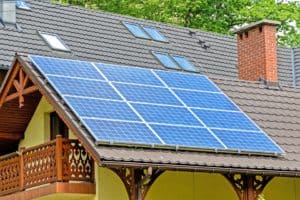Energy-Efficient Renovations: Saving Money and the Environment
These days, upgrading your home’s energy efficiency is both a wise financial decision and a statement for the environment. In this post, we explore how energy-efficient home improvements can benefit the environment and your finances.
Understanding Energy-Efficiency in Home Renovation
Energy efficiency in home renovation is all about updating your home to lower its energy consumption. This might mean anything from putting in new insulation to switching to energy-saving appliances. The aim? A home that’s not only cozy and cheaper to maintain but also kinder to the environment. Let’s check the strategies you can use:
- Insulation: The Key to Energy Efficiency
A well-insulated home is a cornerstone of energy efficiency. This process involves blocking leaks and drafts, especially around windows and doors, and adding insulation to walls, attics, and floors. The benefits are multifold:
- Stable Temperatures Year-Round: Good insulation means your home stays warm in winter and cool in summer without too much help from heating or cooling systems. This natural temperature regulation cuts down on energy use.
- Energy and Cost Savings: When your home holds its temperature well, your heating and cooling systems relax, leading to lower energy use and reduced utility bills.
- Moisture and Mold Control: Insulation is crucial in keeping moisture at bay, preventing mould and mildew issues. Coupled with effective sealing, it acts as a moisture barrier.
- Improved Air Quality: Sealing off leaks helps keep outdoor pollutants like dust and pollen outside, enhancing the quality of your indoor air.
Energy-efficient renovations involve upgrading existing home structures and systems to consume less energy. This can range from installing insulation to upgrading to energy-efficient appliances. The goal is to make your home more comfortable, less expensive to run, and more environmentally friendly.
- Energy-Efficient Windows and Doors
These installations are designed to minimize heat transfer. In winter, they keep warmth inside, while in summer, they reflect exterior heat, keeping interiors cool. This efficiency comes from features like double or triple glazing, low-emissivity (Low-E) coatings, and quality frame materials like vinyl or fibreglass. Look for products with Energy Star ratings to ensure maximum efficiency.
Energy Star-rated products are independently certified to meet strict energy efficiency standards. They’re rated based on factors such as insulation effectiveness (U-factor), ability to block solar heat (SHGC), and air leakage.
It’s essential to select windows and doors suitable for your local climate. For colder regions, a lower U-factor is vital for insulation, whereas in warmer areas, a lower SHGC might be more beneficial to reduce heat gain.
Investing in energy-efficient windows and doors is a wise decision for homeowners aiming to reduce energy expenses and improve living comfort. By leveraging advanced technology and understanding the benefits, you can make a choice that offers both financial savings and contributes to environmental sustainability.
- Upgrading Appliances and Systems
In homes, old appliances, and those big heating or cooling systems are gobbling up your energy. That’s bad news for your wallet and the planet. But, here’s a twist — change them with new, energy-saving ones like fridges, dishwashers, HVACs, and water heaters. Remember, upgrading is not just smart, it’s also kind of a superhero move for your home.
- Solar Panels
Embracing solar energy is a game-changer for both your utility bills and the environment. Installing solar panels transforms your home into a self-sufficient energy hub, significantly slashing your electricity costs. Yes, the upfront cost is notable, but the long-term savings and eco-friendly impact are remarkable.
Solar panels do more than just lighten the load on your wallet, they lessen your home’s dependence on fossil fuels and lower its carbon footprint by tapping into the sun’s renewable energy. Plus, with the rapid advancements in solar technology, these systems are becoming more efficient and accessible, making them a viable option for a wider range of homes.
- Smart Home Technology
Incorporating smart home technology is another step toward energy optimization. Tools like energy monitors, automated lighting controls, and intelligent thermostats put the power of energy management in your hands. They allow for precise control over your home’s lighting, heating, and cooling, leading to increased efficiency and reduced costs.
Take LED lighting, for instance. This simple switch in your home is a straightforward yet impactful way to cut down energy consumption. LED bulbs are not only longer-lasting but also significantly more energy-efficient than traditional bulbs.
They not only lower your energy bills but also lead to fewer bulb replacements. Moreover, the flexibility in lighting options with LEDs, from warm to cool tones, allows you to tailor the ambiance of each room while maintaining an eco-friendly approach. Pairing LED lighting with other smart energy solutions like thermostats and monitors forms a comprehensive strategy for energy efficiency and cost savings in your home.
The Benefits of Energy-Efficient Renovations
When you opt for energy-efficient renovations, you’re not just updating your home; you’re also unlocking a host of financial and environmental benefits.
Financial Perks of Going Green
- Shrink Your Utility Bills: The first thing you’ll notice post-renovation is the drop in your energy bills. As your home becomes a model of efficiency, it consumes less energy, which means more savings for you each month.
- Boost Your Home’s Market Value: Energy-efficient homes are a hot commodity in the real estate market. If you ever decide to sell, these green upgrades can significantly increase your home’s value.
- Reap Tax Benefits: Many governments are now offering attractive tax incentives, rebates, and credits for homes that go green. These perks can help balance the initial investment in energy-efficient renovations.
Environmental Impact of Energy-Efficient Renovations
- Slash Your Carbon Footprint: By using less energy, your home contributes less to greenhouse gas emissions, aiding in the global effort against climate change.
- Conserve Non-Renewable Resources: Energy efficiency means relying less on non-renewable sources like fossil fuels, thus preserving these valuable resources.
- Set a Trend for Sustainable Living: Adopting energy-efficient practices in your home paves the way for a sustainable lifestyle, inspiring others in your community to follow suit.
Challenges and Considerations
While energy-efficient renovations offer many benefits, there are challenges to consider:
- Upfront Costs: Some renovations can be expensive upfront, though they pay off in the long run.
- Finding the Right Contractors: It’s crucial to work with contractors who are experienced in energy-efficient renovations to ensure quality work.
- Staying Informed: Following the latest technologies and government incentives requires research and due diligence.
Energy-efficient home renovations are a win-win for both homeowners and the environment. By focusing on key areas such as insulation, efficient appliances, and smart technology, you can significantly reduce energy consumption, lower bills, increase your home’s value, and contribute to a healthier planet.
The journey towards a more sustainable future begins at home, and energy-efficient renovations are a pivotal step.

